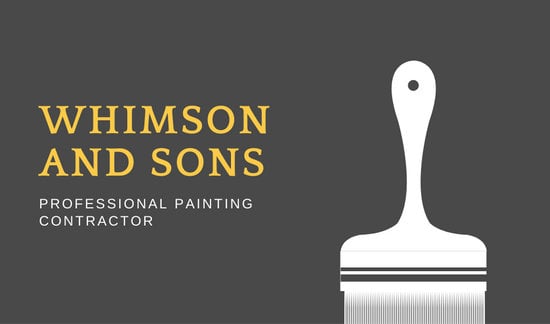Key Seasonal Considerations For Commercial Outside Paint: What You Need To Be Enlightened About
Key Seasonal Considerations For Commercial Outside Paint: What You Need To Be Enlightened About
Blog Article
do you paint the ceiling the same color as walls -Ford Rosendal
When you're preparing a business external painting project, seasonal variables can make or break your outcomes. You'll intend to consider exactly how temperature and moisture impact paint application and drying times. Picking the right season can ensure your paint adheres correctly and lasts much longer. Yet which periods are really the best for this type of work? Let's explore the key elements that can affect your job's success.
The Effect of Temperature Level on Paint Application
When you're intending a business outside painting task, the temperature can significantly influence how well the paint adheres and dries.
Preferably, you intend to repaint when temperatures range in between 50 ° F and 85 ° F. If it's as well chilly, the paint may not treat correctly, causing problems like peeling off or fracturing.
On the other side, if it's also warm, the paint can dry out as well promptly, protecting against appropriate adhesion and resulting in an irregular coating.
You need to additionally take into consideration the moment of day; morning or late afternoon supplies cooler temperature levels, which can be more beneficial.
Always inspect the supplier's recommendations for the specific paint you're using, as they typically supply guidance on the ideal temperature level range for optimal results.
Moisture and Its Result on Drying Times
Temperature isn't the only environmental element that influences your business exterior paint project; humidity plays a significant function also. High moisture levels can reduce drying times considerably, influencing the total high quality of your paint work.
When the air is filled with moisture, the paint takes longer to cure, which can bring about problems like inadequate adhesion and a higher risk of mold development. If you're repainting on an especially humid day, be prepared for extended wait times in between coats.
It's important to monitor neighborhood weather conditions and strategy appropriately. Preferably, go for humidity levels between 40% and 70% for optimal drying out.
Keeping these factors in mind ensures your project remains on track and supplies an enduring surface.
Best Seasons for Commercial Outside Painting Projects
What's the best time of year for your industrial exterior painting tasks?
Spring and early fall are typically your best choices. During these seasons, temperature levels are light, and humidity levels are commonly lower, creating excellent conditions for paint application and drying out.
Avoid summer's intense heat, which can cause paint to dry too swiftly, resulting in poor bond and coating. In a similar way, winter season's chilly temperatures can hinder proper drying out and curing, risking the durability of your paint work.
Aim for days with temperature levels between 50 ° F and 85 ° F for optimal outcomes. Remember to examine the neighborhood weather prediction for rainfall, as wet problems can destroy your task.
Planning around these factors guarantees your paint job runs smoothly and lasts much longer.
Verdict
To conclude, preparing your commercial external paint projects around seasonal considerations can make a significant difference in the outcome. By scheduling job during the excellent temperatures and moisture levels, you'll make certain better bond and drying out times. Remember to keep an eye on regional weather forecasts and pick the right time of year-- spring and very early loss are your best options. Taking cleaning latex paint off brushes will assist you achieve a long lasting and expert finish that lasts.
